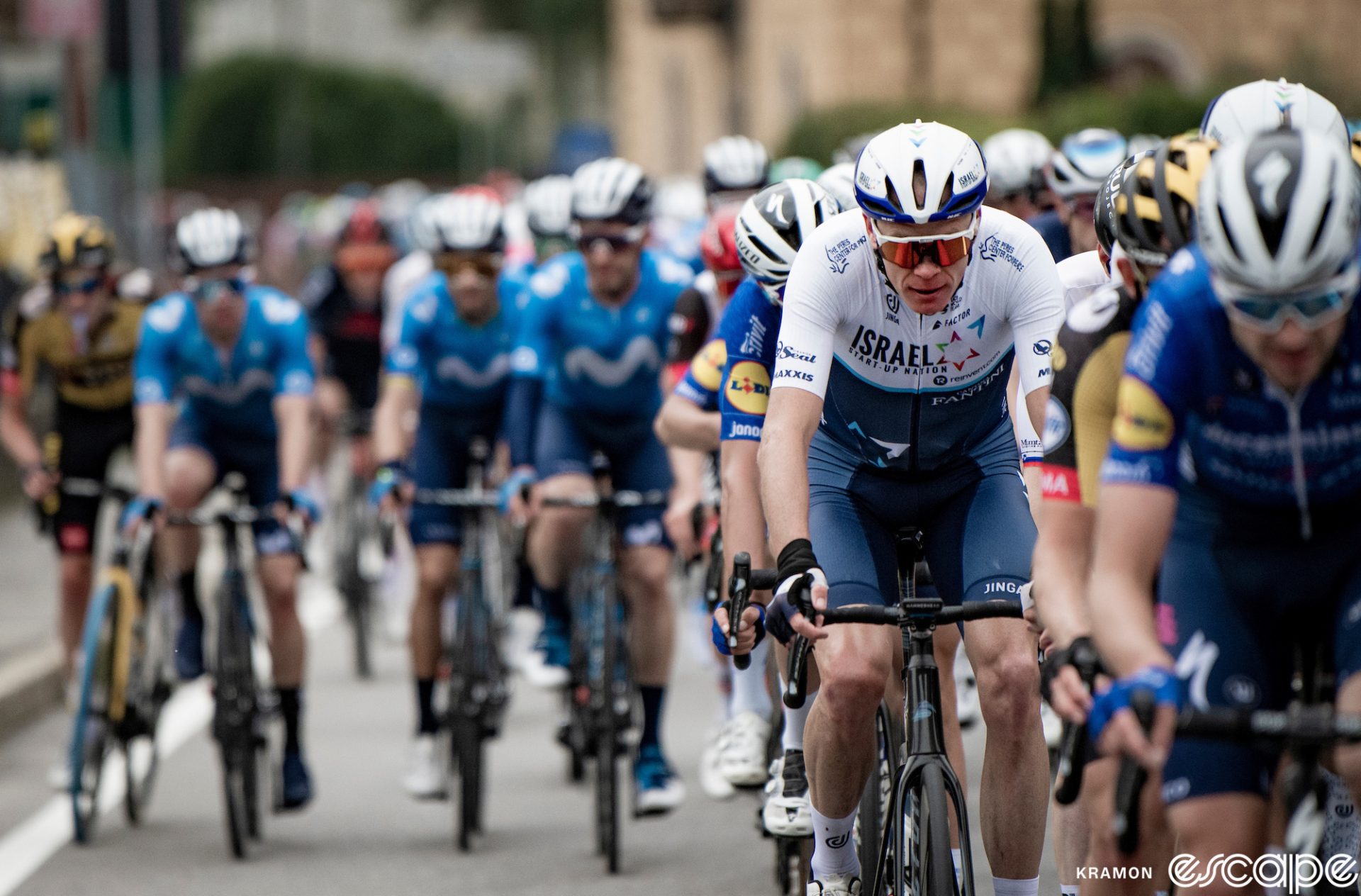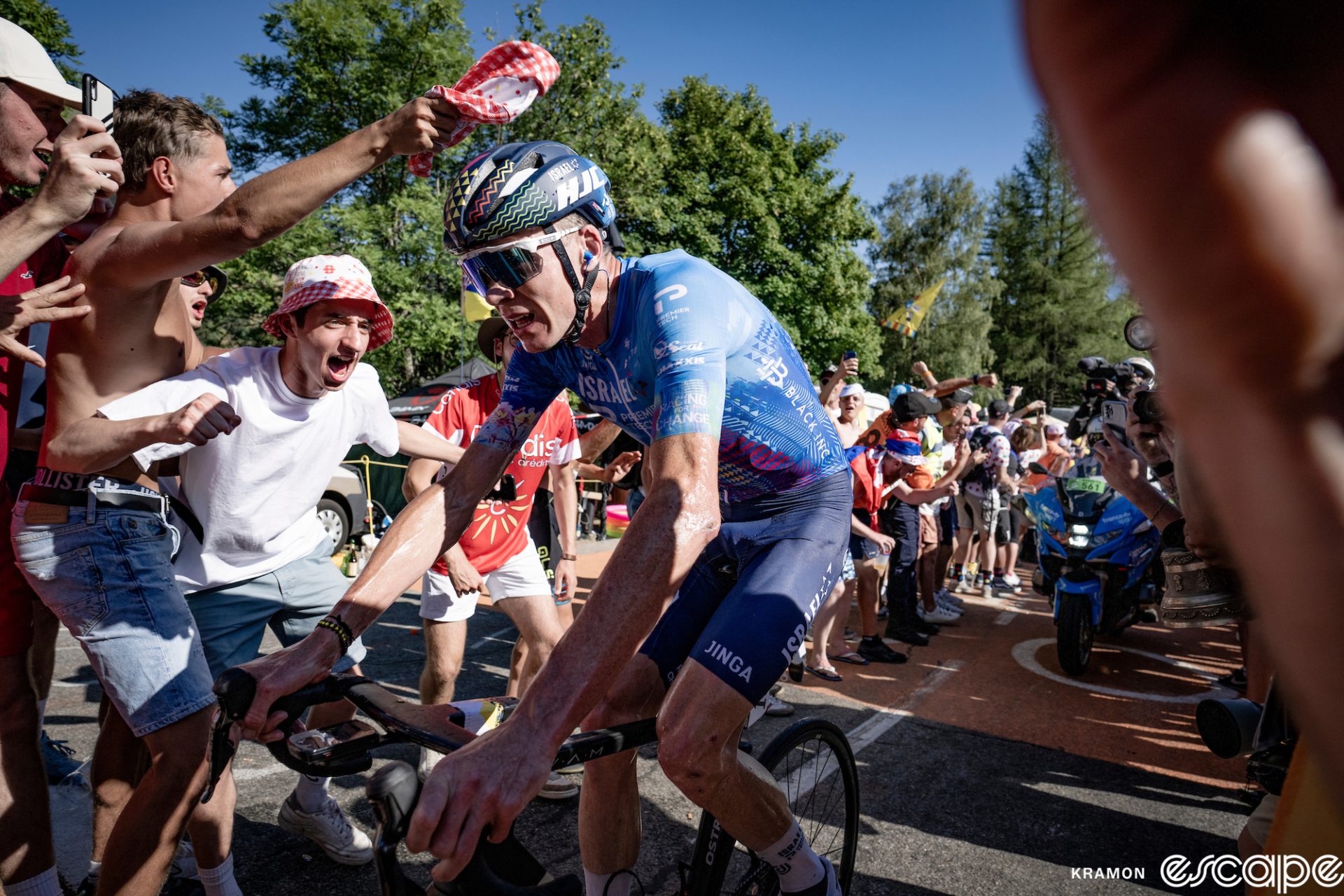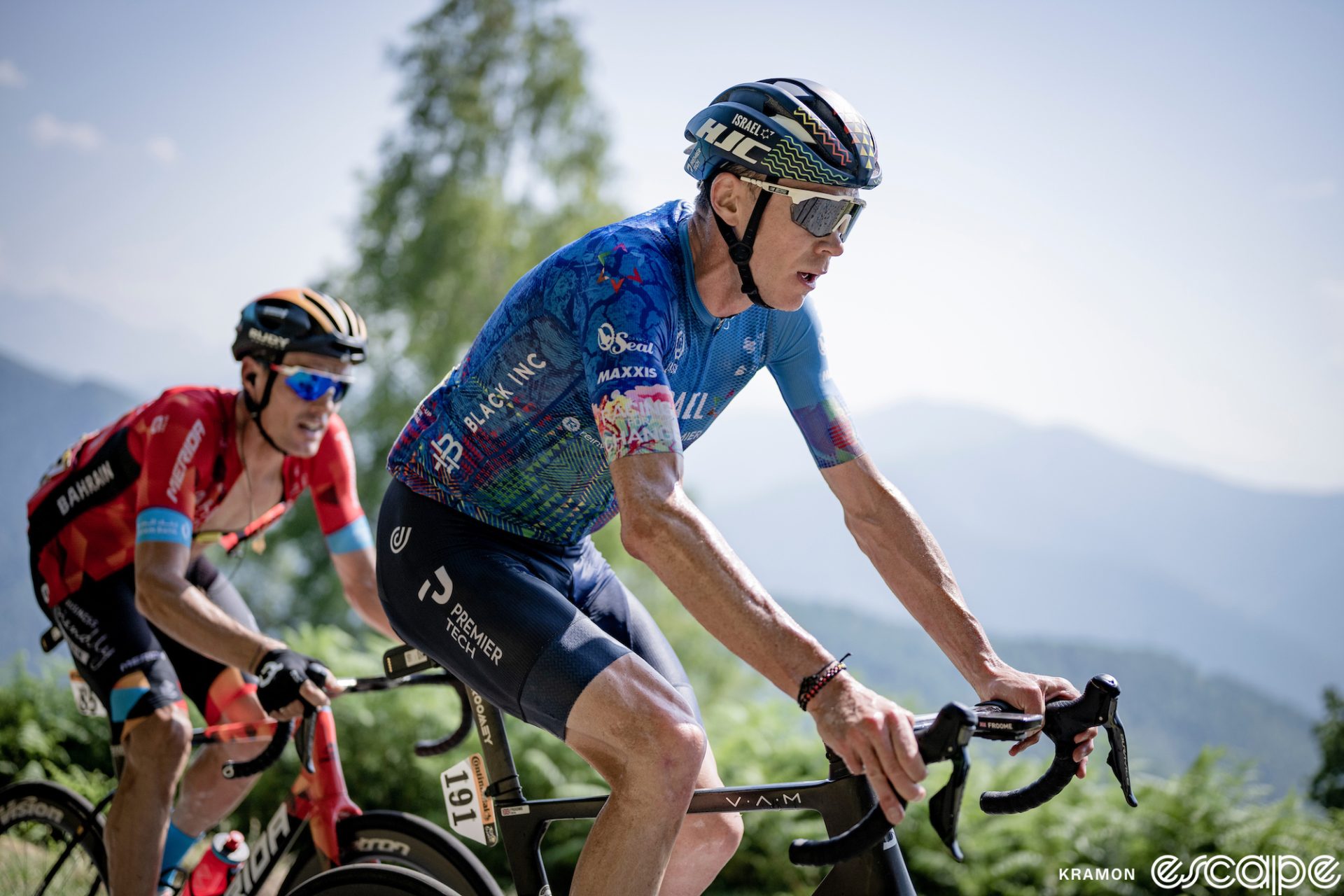The Saitama Criterium – a junket event for fans and racers – doesn’t usually make much in the way of real news in cycling.
But Chris Froome raised a few eyebrows at the race with comments to CyclingNews over the weekend that he’d recently looked at his bike position and found some major problems. “At first I thought it was age starting to catch up with me,” the 38-year-old said. But the four-time Tour de France winner said he compared the position on his Israel-Premier Tech team-issue Factor Ostro VAM to an old Pinarello bike from his Sky/Ineos days and “found that my reach, so from saddle to handlebars, was over three centimeters … longer on the current bike.” Saddle height, he added, was off by a similar amount. “It’s really a lot, we’re not talking millimeters.”
How in the name of Sir Dave Brailsford did such a thing happen?
Froome didn’t get into details, chalking it up as an “oversight,” but added he saw the discovery as a positive. “It might be part of the puzzle, missing pieces, as to why I haven’t quite found the level that I’ve wanted to get to.”
Speaking of puzzles, we’re a bit mystified by the whole thing, really.
It is, as others have pointed out, entirely reasonable to think that Froome’s position on the bike might have changed some over the years, in particular after his horrific June 2019 crash that left him with a fractured right femur and pelvis, among other serious injuries. The femur is the largest bone in the body, and can make for tricky healing. Scar tissue or other complications could easily create functional leg-length discrepancies or range-of-motion issues that would have to be addressed in fit, and Froome has always had a somewhat-odd position on the bike anyway.
But a solid chunk of any resulting fit changes would have taken place on Ineos, where he raced the entire 2020 season. It’s only sometime after going to Israel-Premier Tech for the 2021 season that there’s some departure from whatever those position dimensions are or were.
It is, however, reasonable to think that IPT staff would have at least started with those figures when setting up Froome’s first team bike. It’s also reasonable to think that Froome – or his longtime mechanic, Gary Blem, or both – would have kept historical fit data on hand to keep track of various changes. And, like on all WorldTour teams (which IPT was when Froome joined in 2021), riders get annual fit sessions in the offseason. Here’s Froome getting a fit in 2022, and before the 2023 season. There are some differences in the fit jig equipment that teams use, and it’s conceivable that there are small discrepancies or errors that could arise from that. But those would be on the order of a few millimeters, not the massive jumps Froome claims.

Finally, Froome is not exactly a Cat. 1 amateur living out of his van while hoping for a breakthrough performance at Redlands. Whatever his results the past few years, he is still a handsomely paid four-time Tour winner with all manner of resources at his disposal, both his team’s and his own (believe me, when Chris Froome calls and wants something, sports science and fit people will pick up). In fact, Froome credits an appointment he made on his own with a fit specialist for discovering the problem.
So here is what Froome is telling us: that somehow, at some point during his time on IPT, his position changed dramatically (again, by centimeters, plural, in both reach and saddle height), and no one: not Blem, who has been with Froome for a decade; nor the fitters who IPT works with on at least an annual basis; nor any of Froome’s other sports-science advisors, nor the famously fastidious Froome himself, noticed massive bike-position changes that would be instantly apparent even to a recreational cyclist, for at least months?
Is it unfair to cast shade on Froome’s story? I’d point out that Froome himself, when talking about his performance at June’s Route d’Occitanie, said he’d targeted the race’s big climbing day but felt “locked up” in his lower back and couldn’t put in the performance he wanted. “I could feel something wasn’t right, I wasn’t pushing right on the bike,” he said, and post-stage, he asked Blem to check it out. “He saw straightaway that my saddle setback had slipped.” In other words: in another situation where his fit suddenly changed, Froome was instantly aware, and his mechanic caught it.
Froome, of course, has a history of blaming his equipment for issues. He’s been vocal about his dislike of disc brakes and, last February, said a disc-related slow wheel change cost him a result at the Tour of Rwanda. In June, he again blamed IPT equipment issues (the Occitanie episode and other problems at the CIC Mont Ventoux one-day race) for why he was left off the team’s Tour de France roster. And in mid-October, in comments to GCN, Froome first hinted at the big fit issues, noting that his back pain had disappeared after making changes.
After a crash like Froome suffered, even returning to race as a professional again is a huge achievement. But Froome has, publicly, never been satisfied with that. He wants to win again, to “get back to the pointy end of racing,” as he told GCN last month. “I don’t want to set a limit on what I’m able to achieve.”
That’s a great story. And when Froome was off the front on Alpe d’Huez in the 2022 Tour de France, it seemed for a moment like the old Froome was back, even after Tom Pidcock and then Louis Meintjes passed him for first and second on the stage. But that result, and a few other potentially promising ones, are all that exist in Froome’s now four-years post-crash career that suggest we’ll ever write that story.

And yet, for the man himself, that hope springs eternal. A return to glory is always one race, one result, around the corner. And when it doesn’t come, it’s always something else: a bad bike change or equipment issue, a bunged bike fit, or illness, that stopped it from happening. Froome has said he’s felt miscast the last season or so at IPT, and he told CyclingNews he wants more stage-race opportunities, saying he’s not a one-day specialist. “My strength always came in once fatigue starts setting in, when you’re days into a stage race.” That was absolutely true once, but it’s also true that Froome has raced 27 stage races, including four Grand Tours (three of them with IPT) since his crash, and his best GC finish in any of them was 23rd.
How many flat tires, bad wheel or bike changes, fit screwups, and various illnesses is that? And how much is a man who can’t simply say aloud that, at 38 years old, that fifth Tour victory or even a stage win is probably not One Weird Trick away from happening? The most remarkable thing about the whole saga is how unnecessary it is.
It’s actually awkward at this point, that stage of being politely embarrassed for someone who, for some reason, can’t be honest with us or maybe even with himself. Froome is 38; he has fought back after massive injuries; and while I completely understand the competitive drive, none of his understandably frustrating results the past few years diminishes what he had already accomplished. He's one of seven riders in the sport’s history to have won all three Grand Tours. That’s an amazing achievement, and his 2018 Giro d’Italia victory, coming off an audacious, 80 km raid on stage 19, will go down as one of the most stunning in history. And again, his return to the WorldTour at all is itself a fantastic feat.
Why isn’t that enough?
Did we do a good job with this story?



